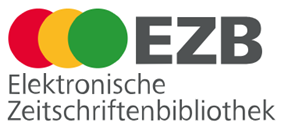Quantitative Trait Loci (QTL) Analysis for Production Traits of Birth Weight and Weight 360 days in Backcross Sheep
Abstract
Four half-sib families (n = 382) consisting predominantly of ITT x Merino x Merino backcross progeny, including some F2 progeny were used to analyze QTL for two production traits (Birth weight = BW1 and Body weight at 360 days = BW360). The study exploited differences in weight performance between the Merino and ITT sheep. A total of 141 informative microsatellite markers were used in a genome-wide scan covering the 26 autosomal sheep chromosomes. QTL analysis was conducted online using QTL Express. This study reports the effect of QTL for birth weight on Chromosomes 5 (p < 0.05) at 112cM (0cM-128cM). Location of candidate genes for birth weight was predicted at the region of flanking markers MCM527-BMS1247. A QTL for BW360 days existed on Chromosome 18 (p < 0.01) at 104cM (25.0-125cM). Location of candidate genes related to production traits for body weight 360 days was predicted at the segment of flanking markers of CSSM018-TMR1. Only the QTL on Chromosome 18 retained significance (p < 0.01) under experiment-wide significance testing. This QTL region is being examined for candidate genes by investigating to the homologous human chromosomal segments.Key words: Quantitative trait loci, production traits, birth weight, weigh 360, backcross sheep
Downloads
HAYATI J Biosci is an open access journal and the article's license is CC-BY-NC. This license lets others distribute, remix, tweak, and build upon author's work, as long as they credit the original creation. Authors retain copyright and grant the journal/publisher non exclusive publishing rights with the work simultaneously licensed under a https://creativecommons.org/


















.png) IPB University
IPB University Department of Biology
Department of Biology The Indonesian Biological Society
The Indonesian Biological Society 

